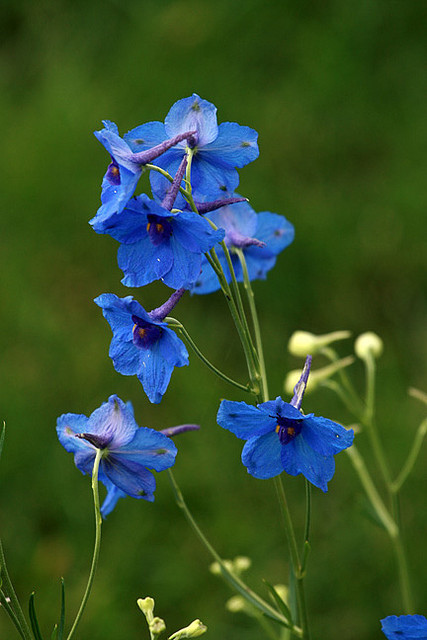Pink flowers symbolize love, gratefulness and even awareness. These gorgeous flowers have been used to decorate weddings as a symbol of love. They may also be used as an expression of thanks. More recently, pink flowers have come to symbolize breast cancer awareness.
Here is a list of 10 pink flowers known for their beauty and elegance.
1. Pink Lilium
photo link
Lilium (members of which are true lilies) is a genus of bulbous perennials grown for their very showy, often fragrant flowers. The prominent large flowers come in a range of colours including oranges, pinks, purples, reds, whites, and yellows. Markings include spots and brush strokes. Among the 100 species, there are four main flower shapes: bowl, funnel, recurved, and trumpet.
2. Pink Hibiscus
photo link
Hibiscus is a genus of flowering plants in the mallow family, Malvaceae. The more than 200 species of hibiscus includes annuals, deciduous, evergreens, and perennials, plants. The funnel-shaped flowers come in red, yellow, white, orange, pink, peach, purple, and even blue. The flowers are attractive to butterflies and hummingbirds.
Pink Dahlia
photo link
Dahlia is a genus of bushy, tuberous, herbaceous perennial plants, natives of the mountainous regions of Mexico. There are 42 species of dahlia, with hybrids commonly grown as garden plants. The majority of species do not produce scented flowers or cultivars. These brightly colored flowers range in colour and even size, from the giant 10-inch “dinner-plate” blooms to the 2-inch lollipop-style pompons.
Pink Hyacinth
photo link
Hyacinthus is a small genus of bulbous flowering plants in the family Asparagaceae, subfamily Scilloideae. Hyacinth grows from bulbs, each producing one to three spikes or racemes of flowers. The strongly fragrant blooms are closely packed with tubular-bell-shaped, single or double flowers. The waxy florets come in shades of white, yellow, red, peach, pink, orange, lavender, salmon, purple, and blue.
5. Pink Rose
photo link
Rose is considered the most popular flower in the world. It is a woody perennial of the genus Rosa, within the family Rosaceae. There are more than 100 species and thousands of cultivars. Flowers range in size and shape and are usually large and showy. It may be as small as 1/2 inch across to a diameter of almost 7 inches. The flower colors range from white, red, yellow, pink, orange, lavender, green, black or mixed colors.
6. Pink Tulip
photo link
Tulips are the most popular spring flowers of all time, and the third most popular flowers world-wide next only to the Rose and Chrysanthemum. It is a genus of perennial, bulbous plants in the lily family common in Eurasian and North African. There are around 100 species of Tulips of which around 75 are wild species. Tulips normally have one flower per stem, however a few species have up to 4 flowers on a single stem. The generally cup or star-shaped showy flowers come in a wide variety of hues, except pure blue.
7. Pink Geranium
photo link
Geranium, commonly known as cranebills, is a genus of 422 species of easy-to-grow perennial plants. They can be found throughout the world, but are native to the temperate climate of South Africa. The flowers are single or double bloom. The attractive and showy flowers come in white, pink, purple or blue. Geraniums come in a wide variety of shapes, and sizes, from tailing to upright varieties and from a few inches tall to a few feet tall.
8. Pink Daylily
photo link
A daylily is a perennial flowering plant in the genus Hemerocallis native to Eurasia, including China, Korea, and Japan. There are over 60,000 registered cultivars. A typical, single daylily flower has three petals and three sepals, collectively called tepals. Each flower usually has six stamens, each with a two-lobed anther.The outer portion of the daylily flower is considered to be the basic color of the flower.
The present daylily color range includes:
Yellowdotall shades from the palest lemon, through bright yellow and gold, to orange.
Reddotdiverse shades of scarlet, carmine, tomato-red, maroon, wine-reds, and blackish-reds.
Pinkdotfrom pale pink through rose-pink to rose-red.
Purpledotfrom pale lavender and lilac to deep grape or violet.
Melon or Cream-Pinkdotfrom palest cream shades to deep cantaloupe shades
9. Pink Astilbe
photo link
Astilbe is a genus of 18 species of perennial flowering plants, within the family Saxifragaceae, native to Asia and North America. There are 25 extant species of Astilbe, with hundreds of hybrids available. The beautiful and showy flowers come in soft shades of white, pink and red.
10. Pink Allium
photo link
Allium, also known as ornamental onion, is a genus of herbaceous perennial plants within the family Amaryllidaceae. They grow from solitary or clustered tunicate bulbs and many have an onion odor and taste. There are more than 700 species known, only a handful are widely cultivated. They are grown for their showy flower heads, which come in variety of sizes and shades including white, yellow, blue, silvery pink and mauve.

























































